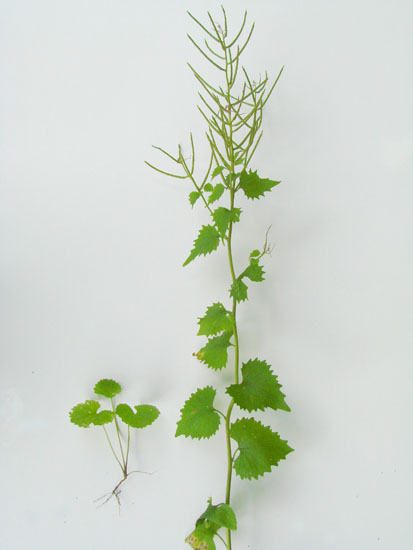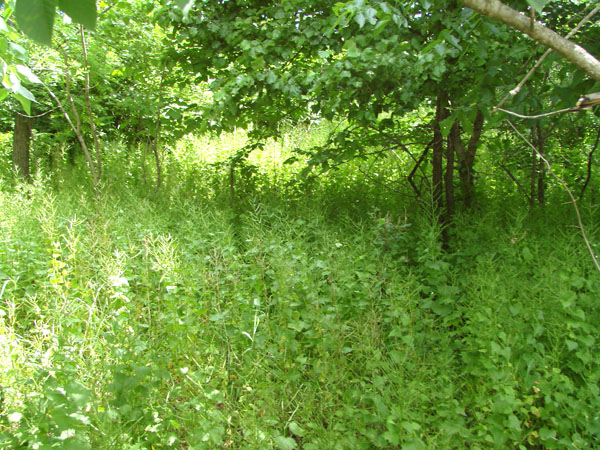Issue 2, May 1, 2009
Invasive Species Spotlight--Garlic Mustard
Garlic mustard in an exotic, invasive plant that was originally brought the United States by early settlers. It is widely distributed throughout Illinois and can be found in forested areas, roadsides, and ditches.
This biennial plant produces a rosette of dark green kidney or heart shaped leaves with scalloped margins the first year of growth. The leaves emit a pungent odor when bruised. During the second year, the plant sends a 1 to 3 foot flower stalk in mid-spring. This plant is readily identifiable in mid-May in forested areas. Its stems have white flowers in small clusters with 4 petals each. Flowers turn into seeds that fade from tan to black and finally split open by mid-summer.

Garlic mustard is a very dominating plant that can establish quickly and outcompete native plants for nutrients, light, and water. Each plant produces hundreds of seeds that can be dispersed by animals, humans, and even flowing water.

Small infestations of garlic mustard can be eradicated by hand pulling plants during their first year or before seed set their second year. Also, cutting the stalk as close to the soil surface as possible as flowering begins may also be effective. Larger infestations may require chemical applications (glyphosate). Recommended treatments times are late fall or early spring as this is a nonselective herbicide and most other plants are dormant during this time frame.
For more information, stop by the Illinois CAPS blog for all the latest news on invasive pests in Illinois.--Kelly Estes
Author:
Kelly Estes